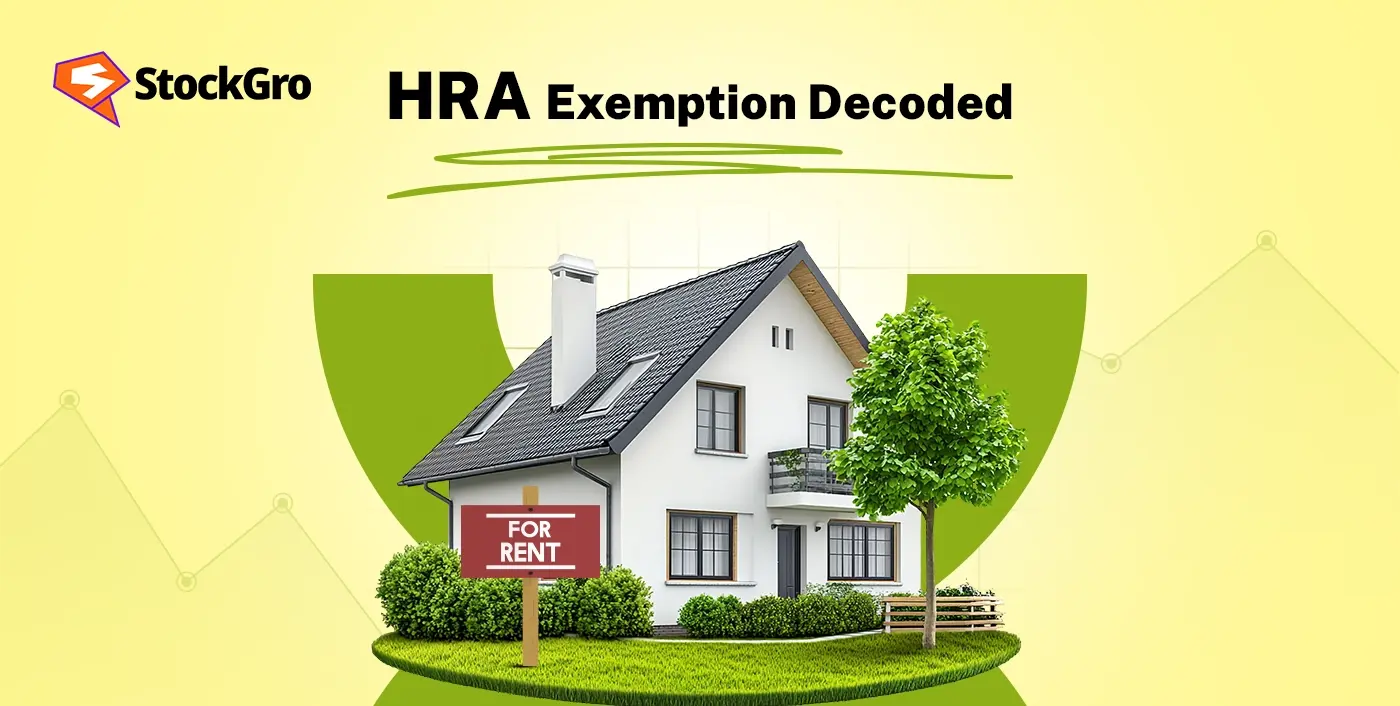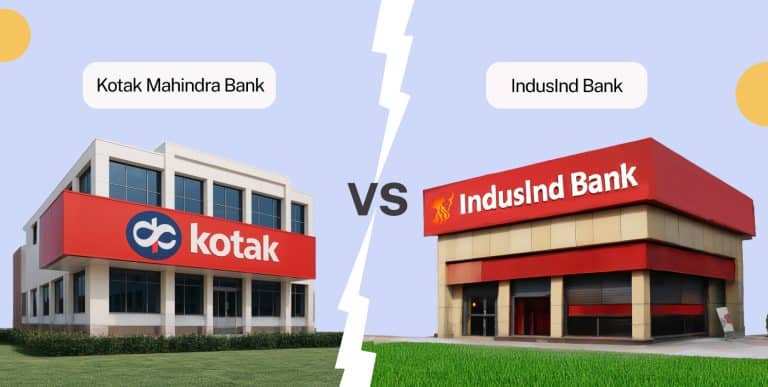
The Cost to Company (CTC) represents the total sum of money a company spends on employing an individual. Therefore, it not only includes the salary but also the benefits such as amenities, perks, etc.
A prominent component of the CTC is a House Rent Allowance. Often, employees have to relocate to meet their job requirements. In such a scenario, the HRA becomes crucial. Plus, certain deductions and exemptions apply to the taxable income. The HRA allowance enjoys such an exemption, subject to certain conditions.
This blog explores the concept of House Rent Allowance in detail to help readers understand how to claim HRA. However, before getting into the process of claiming HRA, let’s understand the meaning of HRA.
Introduction to HRA exemption
House Rent Allowance (HRA) refers to that component of the CTC that is paid to an employee by the employer for meeting their rental accommodation expenses. The rate of HRA allowance differs from one city to another based on the average living expenses attributable to the city. For instance, the HRA paid to an employee of company XYZ in Mumbai might be higher than the HRA paid in Bhopal by the same company.
Moreover, section 10(13A) of the Income Tax Act allows individuals to claim total or partial exemptions on the House Rent Allowance paid by an employer based on certain conditions. However, HRA exemption cannot be claimed if a taxpayer opts for the new tax regime under section 115BAC because the new regime allows certain specific exemptions only, including 80JJAA, 80M and standard deduction.
Many more conditions must be fulfilled to claim HRA exemptions. A comprehensive understanding of how to claim HRA exemption requires a complete understanding of the conditions surrounding HRA exemptions.
Also read: New Income Tax Bill and Tax Slabs Update
Conditions for claiming HRA
Discussed below are certain prerequisites or conditions that must be fulfilled to claim HRA deductions.
- Salaried employee: The taxpayer must be a salaried individual. For instance, an individual claiming profit from a profession is not eligible for the HRA exemption.
- HRA Component: The CTC of a taxpayer has several components, including basic salary, perquisites, healthcare benefits, etc. The CTC of the taxpayer must have the HRA component.
- Rented accommodation: The taxpayer must reside in a rented accommodation. House rent allowance cannot be claimed if the taxpayer resides in an accommodation owned by him.
- Expenditure on rent: The taxpayer must incur expenditure for the payment of rent on residential accommodation. For instance, if Mr A lives in a house owned by Mr B but does not pay any rent, he is not entitled to the HRA exemption.
- Old tax regime: A taxpayer must choose the old tax regime to claim HRA deduction. HRA exemption is not allowed under the new tax regime.
How much HRA can be claimed?
HRA exemption can be claimed in full or partially. The understanding of how to claim HRA is incomplete without acknowledging the amount of HRA that can be claimed. According to the Income Tax Rules 2(A), taxpayers can claim the lowest of the following amounts as an exemption on HRA under section 10(13A).
- The actual HRA amount paid by the employer to the taxpayer.
- The difference between the sum of money that the assessee spent on rent for the residential property he inhabited and a tenth or 10% of the wage that he is entitled to.
HRA Exemption = Actual Rent Paid – 10% [Basic Salary + Dearness Allowance]
- The third option varies based on the location of the residential property.
- If the property is situated in metro cities like Delhi, Mumbai, Kolkata or Chennai, the amount of exemption would be half of the amount of salary due to the taxpayer.
HRA Exemption = 50% [Basic Salary + Dearness Allowance]
- If the property is situated in any other city, the amount of exemption will be two-fifth or 40% of the amount of salary due.
HRA Exemption = 40% [Basic Salary + Dearness Allowance]
After calculating the HRA exemption based on the three situations, the taxpayer must choose the lowest one. An illustration can further crystallise the understanding of how much HRA can be claimed.
Illustration on How to claim HRA exemption
Mr A is employed in Kolkata. His basic salary is ₹30,000 per month, and he also gets a monthly dearness allowance of ₹3,000. Mr A gets an HRA of ₹1,00,000 per annum. His actual monthly rent is ₹10,000 per month.
The calculation below shows how much HRA can be claimed by Mr A. However, before getting into the actual calculation, the monthly figures must be converted into annual figures.
Calculating the parameters required for HRA calculation
Annual Basic Salary = ₹30,000 x 12 months = ₹3,60,000
Annual DA = ₹3,000 x 12 months = ₹36,000
Annual Rent paid = ₹10,000 x 12 months = ₹1,20,000
Annual HRA given = ₹1,00,000
Now, the table below shows the amount of HRA that can be claimed.
| Option | Calculation | Final exemption |
| 1 | Actual HRA amount paid | ₹1,00,000 |
| 2 | Actual rent paid – 10% [Basic Salary + DA]= 1,20,000 – 10%[3,60,000 + 36,000] | ₹80,400 |
| 3 | As he is in Mumbai, this formula should be used50% x [Basic Salary + DA]= 50% x [3,60,000 + 36,000] | ₹1,98,000 |
| The lowest among the three options is ₹80,400. Therefore, the HRA exemption that A can claim is ₹80,400 | ||
Also read: Tax Implications in Share Trading and F&O
HRA Calculator: How much HRA can be claimed?
Presently, taxpayers can skip the manual calculation of the eligible HRA exemption and utilise the HRA calculator to understand how to claim HRA in income tax return.
Step 1: Visit the HRA calculator by Stockgro.
Step 2: Fill in the basic salary details.
Step 3: Next, enter the dearness allowance per annum.
Step 4: Enter the annual HRA received and total rent paid per annum.
Step 5: Finally, the taxpayer must answer if they are located in a metro city. In case the taxpayer is located in a metro city, they must slide the button to the left.
Step 6: Once all the data is entered, the calculator automatically calculates the HRA exemption applicable and shows the result.
How to claim HRA while filing ITR
Once the eligible HRA exemption is ascertained, the taxpayer can claim it in their Income Tax Return. The steps below might aid in the understanding of how to claim HRA exemption in the ITR.
Step 1: Calculate the taxable salary after claiming the necessary deductions.
Step 2: Choose the ITR form that applies to the taxpayer in question.
Step 3: The HRA details might be prefilled. Recheck the information present or fill in the applicable exemption in case it is not prefilled.
Documents required: How to claim HRA in Income Tax Return?
Providing all supporting documentation with the income tax return is usually not required. However, a taxpayer might need to furnish documentary evidence in certain specific situations, like replying to a notice sent by the Income Tax Department. The key documents needed to submit an HRA claim are listed below.
- Rent receipts as proof of rent paid.
- A rental agreement stating that the taxpayer is inhabiting a rental property.
- Salaried employees must submit Form 12BB to their employers to obtain tax exemptions and deductions on their salary.
- Salary slips where HRA is shown as a component of CTC.
Bottomline
Tax planning involves the reduction of tax burden utilising the available reliefs in the form of deductions and exemptions. An optimum understanding of the prevalent tax laws and provisions is the key to avoiding unnecessary burdens.
A key exemption that enables users to reduce the tax burden on their salary income is the House Rent Allowance (HRA). Understanding how to claim HRA exemption is integral. Currently, taxpayers can also utilise the online HRA calculator by the Income Tax Department or Stockgro to calculate the exemptions. Moreover, HRA calculation is applicable only under the old tax regime.
Also read: Unlocking tax benefits: Your guide to section 80GG deductions
FAQs
Yes, a taxpayer can claim an HRA exemption even if they are living with their parent, provided the property is not in the name of the taxpayer and the taxpayer in question is paying rent to their parents. Moreover, the CTC of the taxpayer must account for an HRA allowance. Optimum documentation is necessary for claiming income tax deductions and exemptions conveniently.
The HRA exemption and the home loan interest deduction are both available to taxpayers. If a taxpayer’s home and their rental home are in the same city, they must provide optimum grounds for their status to support their claim for a deduction. For example, the workplace may be located distant from the owner’s home. Relevant documentation is necessary for claiming income tax deductions and exemptions conveniently.
An HRA exemption cannot be claimed by a self-employed person. Nonetheless, section 80GG allows certain deductions to such taxpayers. HRA exemptions are applicable based on certain conditions. For instance, the taxpayer must be a salaried individual, and the CTC must include the House Rent Allowance as a component. Moreover, the deduction can be claimed only under the old tax regime. If the taxpayer is opting for the new tax regime, they cannot claim HRA deduction.
Under certain circumstances, people may be eligible for whole or partial exemptions from the House Rent Allowance given by their employers under Section 10(13A) of the Income Tax Act. Furthermore, if a taxpayer chooses the new tax system under section 115BAC, they are unable to claim the HRA exemption since the new regime only permits certain specified exemptions, such as the 80JJAA, 80M, and standard deduction.
In India, taxpayers are required to file an Income Tax Return (ITR) to detail their income, spending, taxes paid, and tax due for the fiscal year. It includes capital gains, business, and salary income, among other sources. In addition to ensuring compliance, filing an ITR facilitates loan or visa applications, permits refunds, and carries forward losses. The seven ITR kinds are ITR-1 through ITR-7.

